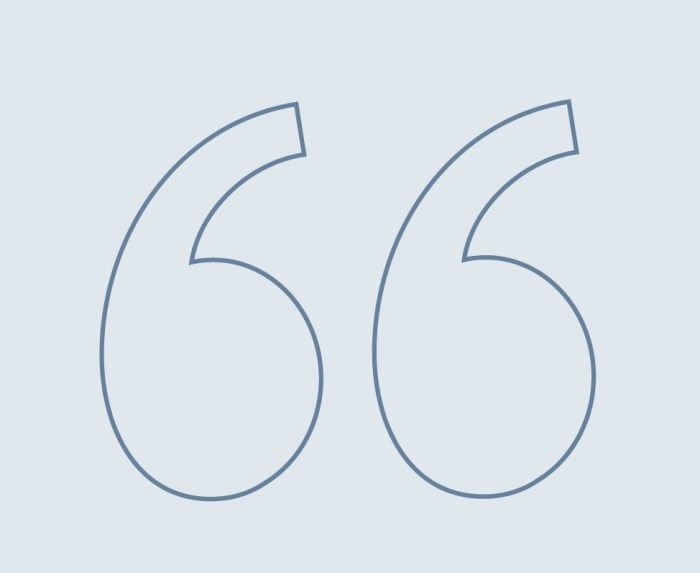MENU
AT | EUR
AT | EUR
-
- Benchtop Centrifuges
- Floor-Standing Centrifuges
- Refrigerated Centrifuges
- Microcentrifuges
- Multipurpose Centrifuges
- High-Speed Centrifuges
- Ultracentrifuges
- Concentrator
- High-Speed and Ultracentrifugation Consumables
- Accessories
- Tubes
- Plates
- Device Management Software
- Sample and Information Management
- IVD Products
No results found
Search Suggestions

Dossier Creativity 1 - The Future Belongs to the Creative
Beyond Science
- Nature
- Off the Bench
- Off the Bench
- Dossier
Artificial intelligence can imitate music by Beethoven; it can write journal articles and even create paintings. Is human creativity on its way to becoming superfluous? The clear answer is no. Creativity is now more coveted than ever.
The work that Ludwig van Beethoven never had a chance to finish was to be taken over by artificial intelligence: the completion of the tenth symphony. For two years, the computer performed calculations for the AI project “Beethoven X”. It had previously been fed roughly 10,000 pieces of music from the Beethoven era. The result, which premiered in Bonn in 2021, was politely deemed “interesting” by experts. Conductor Dirk Kaftan concluded: AI processes the past. He seriously doubts its ability to create anything new and original.
Creativity is booming
A genius like Beethoven will never be replaced with any kind of AI. But even beyond the realm of prodigies and virtuosos, real creativity requires the human spirit. Despite all the advances in the field of AI, creativity is more important than ever before in the 21st century. Stephen Lamb, Professor of Education at the University of Melbourne and his team count creativity among the “key skills for the 21st century”. In practical terms: creativity is a clear favorite when it comes to the desired “soft skills” listed in countless job ads. Creativity is booming.
But what exactly is creativity? There is no definition that covers all aspects. The characteristics that make a person a “creative” lie predominantly in the eye of the beholder. While one person may perceive a successful painter or writer to be a genius, another may more easily recognize genius in an engineer, or the winner of the Nobel Prize in Chemistry. The spirit of the time (Zeitgeist) definitely plays a role as well – for example, many exceptionally gifted artists, including Johann Sebastian Bach or Vincent van Gogh, lived in the shadows until their deaths. The latter only sold a single painting during his lifetime, for 400 francs. Today, his art yields astronomical sums.
Creativity is booming
A genius like Beethoven will never be replaced with any kind of AI. But even beyond the realm of prodigies and virtuosos, real creativity requires the human spirit. Despite all the advances in the field of AI, creativity is more important than ever before in the 21st century. Stephen Lamb, Professor of Education at the University of Melbourne and his team count creativity among the “key skills for the 21st century”. In practical terms: creativity is a clear favorite when it comes to the desired “soft skills” listed in countless job ads. Creativity is booming.
But what exactly is creativity? There is no definition that covers all aspects. The characteristics that make a person a “creative” lie predominantly in the eye of the beholder. While one person may perceive a successful painter or writer to be a genius, another may more easily recognize genius in an engineer, or the winner of the Nobel Prize in Chemistry. The spirit of the time (Zeitgeist) definitely plays a role as well – for example, many exceptionally gifted artists, including Johann Sebastian Bach or Vincent van Gogh, lived in the shadows until their deaths. The latter only sold a single painting during his lifetime, for 400 francs. Today, his art yields astronomical sums.
Read more
Read less

Novel and useful
Science, at least, was able to agree on one thing: creativity describes the ability to create things or solutions that are both novel and useful. Scientists found that children are born with the potential to be creative. According to Professor Sebastian Kernbach, humans are most creative during childhood (see his interview on page 20). In order to preserve this ability in later life, additional conditions have to be met. Gifts and talents, comprehensive knowledge in a specialist field, motivation, diligence and hard work – as well as personality traits such as a thirst for novelty and self-confidence, and a supportive and somewhat demanding environment that enables the development of a talent.
“At the end of the day”, emphasize psychologists Vlad Petre Glăveanu of Dublin City University and James C. Kaufman of the University of Connecticut, “everyone has what it takes to be creative. We are all creative – at least potentially. Being creative means to think of new and useful ideas or things. Being creative is not a luxury but rather a necessity in today’s changing world. Creativity is the key to success in almost all areas of life, be it personal or professional. It can and should be learned. In most civilized societies, there will never be enough of it.”
This is becoming evident, especially when looking at the variety of offers for appropriate techniques and brain training. But is it really possible to control creative thought? This is what psychologist Roger E. Beaty of Pennsylvania State University is studying. His finding: creativity is only partly based in controlled thought. Experience takes care of the rest. “We look at creative thinking as a dynamic interaction between memory and the control systems in the brain. Without memory, our minds would be blank slates – not at all conducive to creativity, which relies on knowledge and experience. That being said – without mental control, we would not be able to think in new directions or avoid getting stuck in learned knowledge”, says the American psychologist. Beaty regrets that the question whether creativity can be strengthened in the long term has not yet been subject to scientific study.
A change of scenery for novel thoughts
Despite all this, the demand for more creativity is ubiquitous. Even children should be taught skills that distinguish them from machines, demands Jack Ma, founder of the trade platform Alibaba. How will this stand up to everyday challenges? According to education scientists, children need creative adults. For those, in turn, countless tips are available on how to find creative solutions. Researchers at Stanford University discovered that exercising in the fresh air leads to the generation of fresh ideas – more than while sitting or even on the treadmill.
A change in location, too, and allowing your thoughts to wander; cellphone-free time and a little bit of chaos on the desk are said to spur on creativity. Breaking out of our daily routines also has the potential to inspire us: on your way home, simply take a different route and see what new discoveries it has to offer.
Whether in marketing, in research departments of companies or in universities: the professional world, in particular, is pining for a wealth of ideas and innovation. Established creativity techniques such as brainstorming (free association), mind maps (visualization of all ideas on a sheet of paper) or different design-thinking approaches have one thing in common: they are intended to guide one’s thoughts along a different path while fighting one’s old ways, as in: “we’ve always done it this way”.
Science, at least, was able to agree on one thing: creativity describes the ability to create things or solutions that are both novel and useful. Scientists found that children are born with the potential to be creative. According to Professor Sebastian Kernbach, humans are most creative during childhood (see his interview on page 20). In order to preserve this ability in later life, additional conditions have to be met. Gifts and talents, comprehensive knowledge in a specialist field, motivation, diligence and hard work – as well as personality traits such as a thirst for novelty and self-confidence, and a supportive and somewhat demanding environment that enables the development of a talent.
“At the end of the day”, emphasize psychologists Vlad Petre Glăveanu of Dublin City University and James C. Kaufman of the University of Connecticut, “everyone has what it takes to be creative. We are all creative – at least potentially. Being creative means to think of new and useful ideas or things. Being creative is not a luxury but rather a necessity in today’s changing world. Creativity is the key to success in almost all areas of life, be it personal or professional. It can and should be learned. In most civilized societies, there will never be enough of it.”
This is becoming evident, especially when looking at the variety of offers for appropriate techniques and brain training. But is it really possible to control creative thought? This is what psychologist Roger E. Beaty of Pennsylvania State University is studying. His finding: creativity is only partly based in controlled thought. Experience takes care of the rest. “We look at creative thinking as a dynamic interaction between memory and the control systems in the brain. Without memory, our minds would be blank slates – not at all conducive to creativity, which relies on knowledge and experience. That being said – without mental control, we would not be able to think in new directions or avoid getting stuck in learned knowledge”, says the American psychologist. Beaty regrets that the question whether creativity can be strengthened in the long term has not yet been subject to scientific study.
A change of scenery for novel thoughts
Despite all this, the demand for more creativity is ubiquitous. Even children should be taught skills that distinguish them from machines, demands Jack Ma, founder of the trade platform Alibaba. How will this stand up to everyday challenges? According to education scientists, children need creative adults. For those, in turn, countless tips are available on how to find creative solutions. Researchers at Stanford University discovered that exercising in the fresh air leads to the generation of fresh ideas – more than while sitting or even on the treadmill.
A change in location, too, and allowing your thoughts to wander; cellphone-free time and a little bit of chaos on the desk are said to spur on creativity. Breaking out of our daily routines also has the potential to inspire us: on your way home, simply take a different route and see what new discoveries it has to offer.
Whether in marketing, in research departments of companies or in universities: the professional world, in particular, is pining for a wealth of ideas and innovation. Established creativity techniques such as brainstorming (free association), mind maps (visualization of all ideas on a sheet of paper) or different design-thinking approaches have one thing in common: they are intended to guide one’s thoughts along a different path while fighting one’s old ways, as in: “we’ve always done it this way”.
Read more
Read less
Creativity is the key to success in almost all areas of life, be it personal or professional. It can and should be learned … ”
Vlad Petre Glăveanu,Dublin City University
James C. Kaufman,
University of Connecticut

Creating room for creativity
Whether such techniques and methods can increase creativity in the long term remains controversial. This may be another reason why doubts are increasingly expressed when it comes to the “boom of ideation workshops and creativity methods”. These exist to “routinely develop new products and services for the maximization of profit”, criticize the publishers of the trend study “Free Creativity” of the Frankfurt Future Institute. Truly future-proof innovations are thus strictly and consistently geared towards questions of meaning and usefulness – and independent thought, as well as empathy, are the most important prerequisites for true creativity.
Companies and research institutions should therefore focus on the basic creative potential of humans, which machines do not yet possess, and create an open and innovation-friendly environment. Not least, the creativity techniques from our childhoods, such as playing music or painting, can provide us with brand new ideas. Psychologist Beaty emphasizes that as long as there is no scientific answer to whether or not cognitive abilities can in fact be improved through neuroscientific methods and techniques, a tried and true art class can indeed be the best solution.
Whether such techniques and methods can increase creativity in the long term remains controversial. This may be another reason why doubts are increasingly expressed when it comes to the “boom of ideation workshops and creativity methods”. These exist to “routinely develop new products and services for the maximization of profit”, criticize the publishers of the trend study “Free Creativity” of the Frankfurt Future Institute. Truly future-proof innovations are thus strictly and consistently geared towards questions of meaning and usefulness – and independent thought, as well as empathy, are the most important prerequisites for true creativity.
Companies and research institutions should therefore focus on the basic creative potential of humans, which machines do not yet possess, and create an open and innovation-friendly environment. Not least, the creativity techniques from our childhoods, such as playing music or painting, can provide us with brand new ideas. Psychologist Beaty emphasizes that as long as there is no scientific answer to whether or not cognitive abilities can in fact be improved through neuroscientific methods and techniques, a tried and true art class can indeed be the best solution.
Read more
Read less

